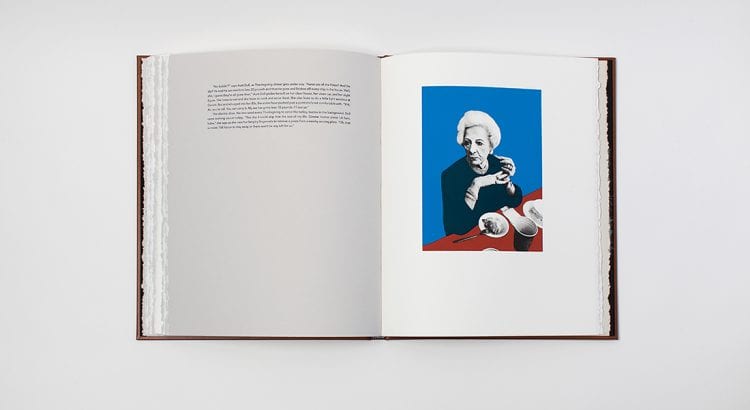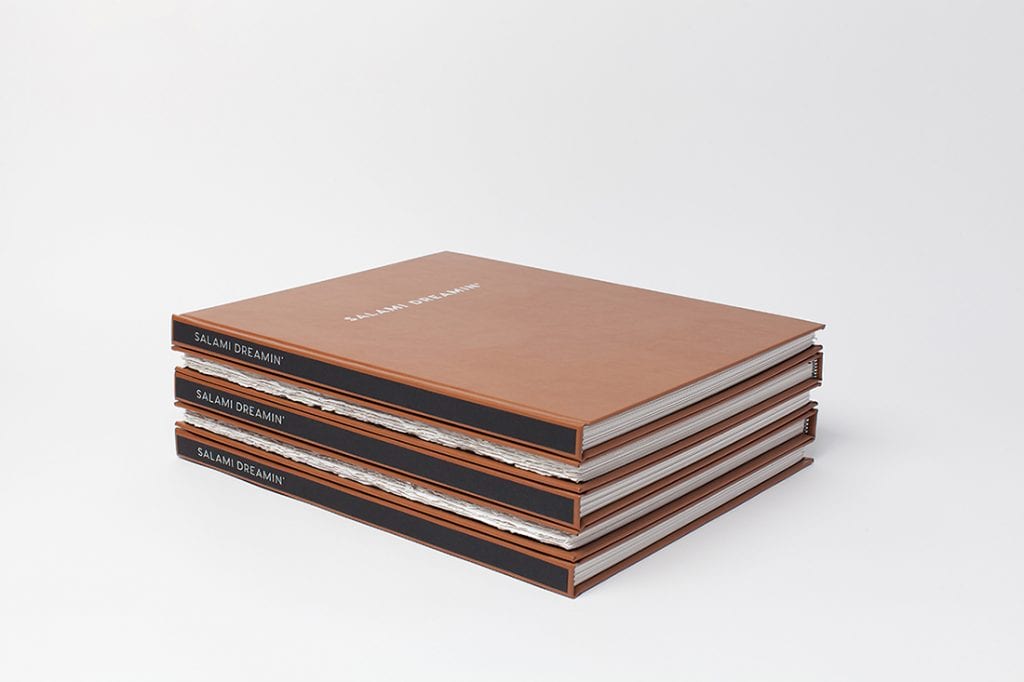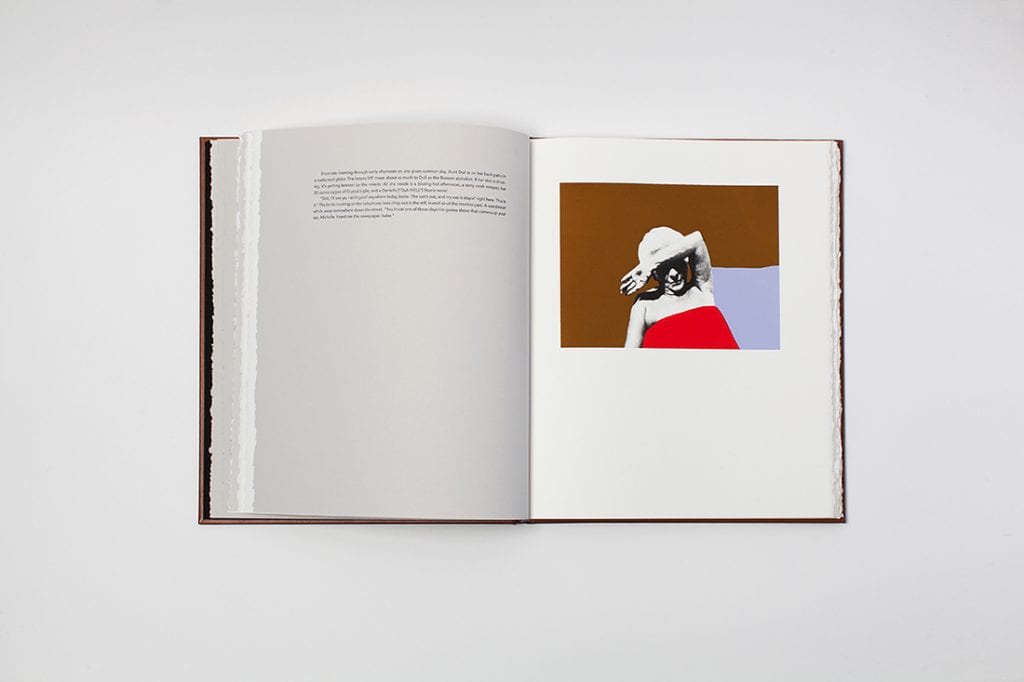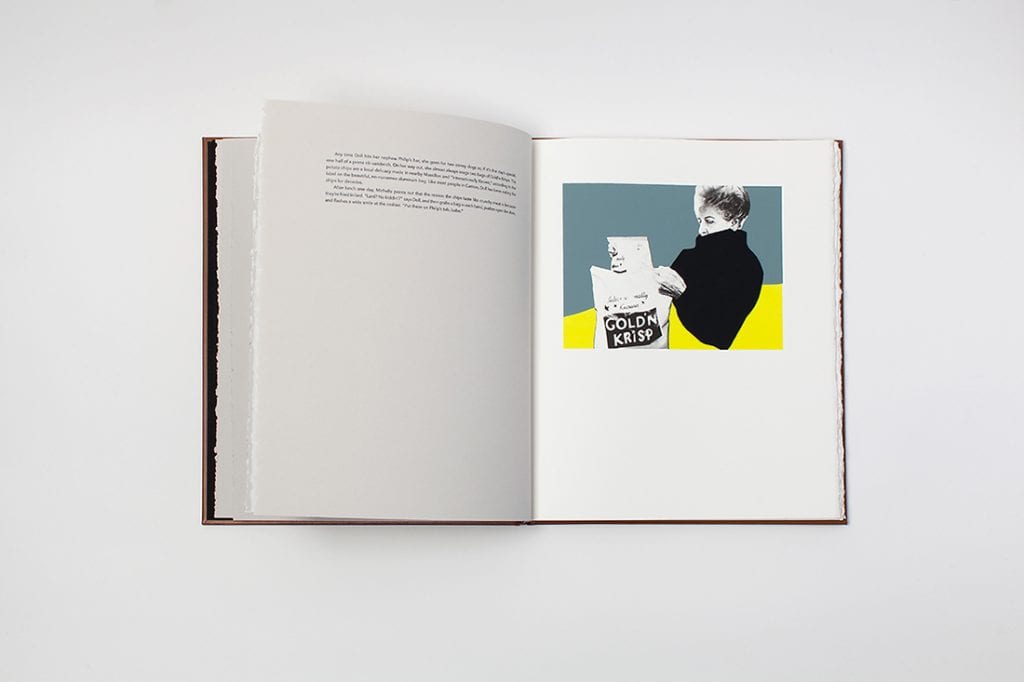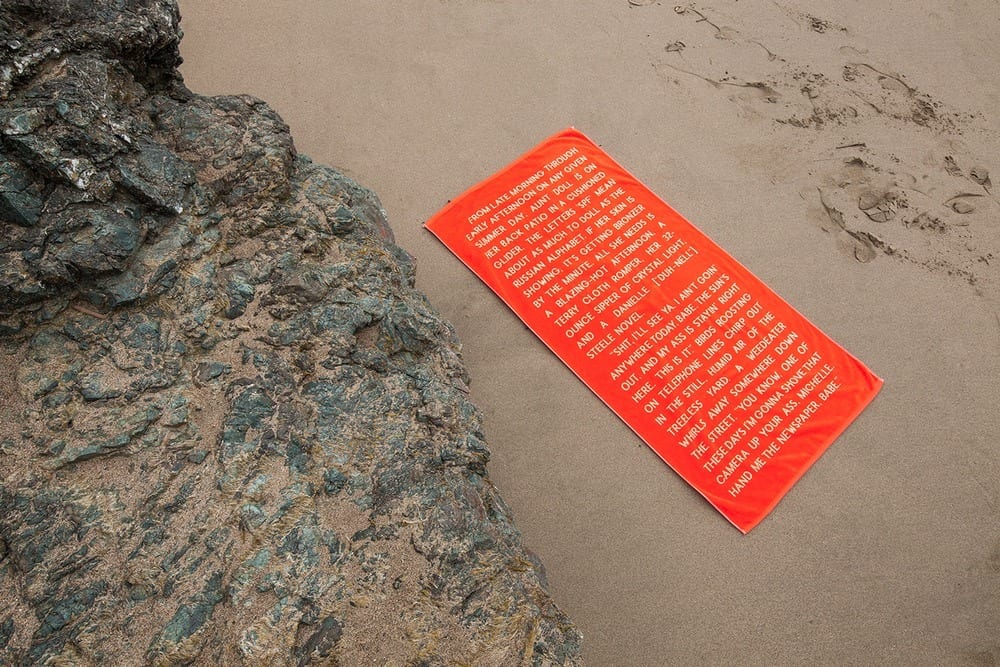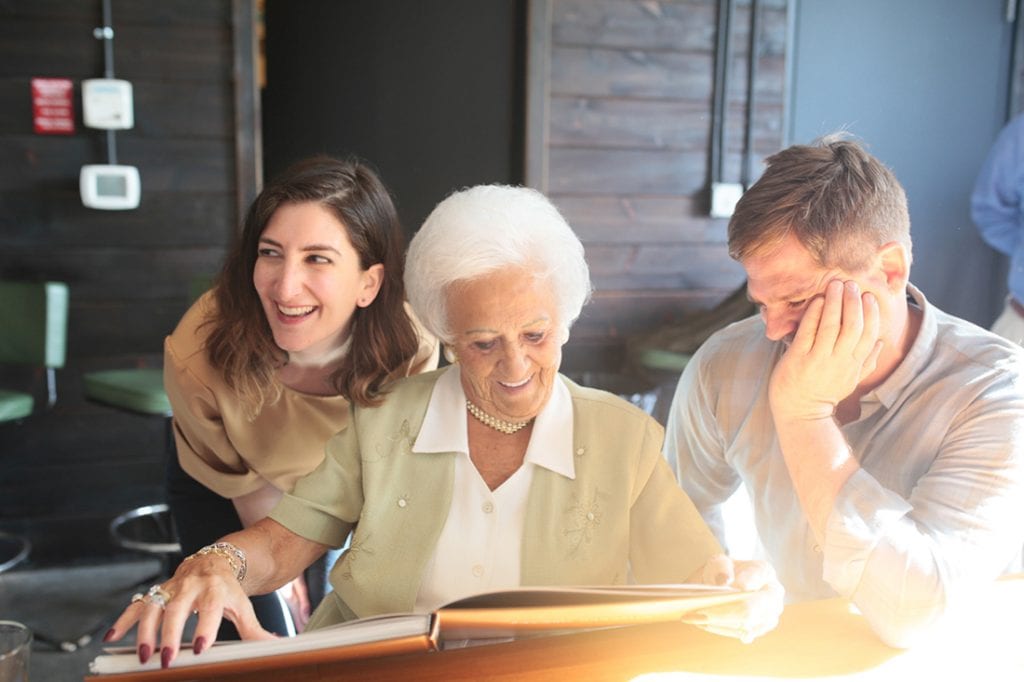
Ever notice how the people who are the “characters” in your life (ie. “She’s a real character, that one!”) are considered so because they refuse to live in our reality?
I love those people, “characters” — when it’s genuine, it means they’re brave enough to construct their own world and define how they live in it.
Artist Michelle Maguire’s Great Aunt Doll is one of those people.
Aunt Doll has lived in Canton, Ohio, all 85 years of her life. She’s Italian American and easily unimpressed.
“She cusses, loves cured meats, knows more about the NFL than you do, plays strip mall slot machines with her vegetarian hairdresser of 42 years, isn’t trying to be funny but is, worships the sun from her concrete-slab patio, and frets about nothing except her beloved Italian bread packing on the pounds,” Michelle says. “Aunt Doll makes the most if it.”
And Michelle made the most of her relationship to this potato chip queen in Canton by making a limited-edition book that chronicles her time with Aunt Doll.
Titled “Salami Dreamin’”, it compiles lithography and silkscreen-printed images of Aunt Doll doing daily life things. Michelle’s application of color in these images is engrossing and almost crass, perfectly befitting a woman that makes “Fuck it” feel like a rallying call to arms to live life to the fullest — whatever that means to you. On the white backdrops, Aunt Doll’s life pops, just like her.
With each of Michelle’s carefully crafted images is a letter-press printed anecdote by writer Aaron Beck. It’s here we hear the sizzle of a tongue tested and triumphant in telling the truth.
For example, on a gorgeous day spent in the sun:
“I ain’t goin’ anywhere today, babe. The sun’s out and my ass is stayin’ right here. This is it.”
Humor aside, what strikes me about Michelle’s work is her eye for finding something most of us wouldn’t see in a moment (alas, like an artistic version of her beloved aunt). The scenes of “Salami Dreamin’” push through the brazen nature of the character and give hints of everyday human experience, even for our favorite “characters.” Doll’s snacking, reading the paper, or simply just hanging out.
In these moments both she and the artist watching her find peace in the simplicity of just living. There can be optimism and beauty in monotony… if you just shut the fuck up and let it happen.
You can check out more of Michelle’s work here. (Her most recent series “Wardrobe Snacks” with photographer Kelsey McClellan is totally binge-worthy.)
As for “Salami Dreamin’”, a copy of the book is now in the permanent collection of the School of the Art Institute of Chicago’s Joan Flasch Collection. It’s open to the public so you have no excuse not to go meet Aunt Doll.
“The gist of her story,” Michelle says: “Enjoy every chicken wing while you holler at the Cleveland Browns on your gigantic analog TV, because we aren’t here forever.”
Enjoy every chicken wing while you holler at the Cleveland Browns on your gigantic analog TV, because we aren’t here forever.
How did you make the actual physical book? Why put it together into a book?
For most of my adult life I’ve documented certain members of my family. Aunt Doll is one of Aaron’s and my all-time favorite people, so we hang out with her pretty much every chance we get, most typically in her Canton, Ohio home. For years I’d take still photos of her, much to her annoyance, while a tiny video camera rolled away in the background – both devices simultaneously capturing mundane and domestic goings-on, and creating an automatic transcript of her hilarious dialogue. I did this only to document and preserve her for myself; the idea to take all of the material and turn it into something came only after we realized how much I’d gathered. So I started to explore what it would mean to turn it into a book.
I’m a librarian in the Department of History of Art at The Ohio State University, so I’m lucky to be surrounded by so many wonderful resources, including printmakers and bookbinders. I began asking friends and colleagues around campus who to talk to, and pretty soon had assembled a wonderful crew of people to help me bring the book to life. What that series of photos and video evolved into has been the most rewarding and challenging project I’ve ever taken on.
How long did Salami Dreamin’ take to make? Were there ever any moments where you felt discouraged or like it wasn’t worth it? If so, what caused those moments and how did you work through them?
Production took a team of 6 people (including myself) with full-time jobs a year and a half, from making mock-ups, to cutting down paper, to mixing inks, to printing, to building and sewing the book. Fifty-five times! It was an enormous undertaking. That’s major dedication by a bunch of skilled, talented, obstacle-tackling people who didn’t even know me prior to this book project. I am forever in their debt.
There were many moments where every one of us felt overwhelmed, like the times when a layer of a print would be a real bastard registration-wise, which was nerve-wracking and caused me to repeatedly question why I created artwork with zero wiggle room. Edition bookmaking is no small task. It definitely made me sweat but it always felt like it’d be worth it.
How did you collaborate with a writer/Aaron? Did the artwork come first or did you two work in tandem?
We were together the entire time the footage and images were being recorded, so it felt only natural to work as a team to tell her story. Collaborating with Aaron was great. I knew if he was going to be involved that it would be funny and thoughtful and full of wonderfully vivid descriptions, perfectly conveying the essence of Aunt Doll. He really nailed it.
Any advice for readers looking to self-publish or make a book?
Go for it! And don’t be in a hurry.
What moves you to make art?
I feel my best and most alive when I’m making something. It’s how I respond to everything, it’s how I most naturally connect with people, and it always leads to new things.
My dad died unexpectedly almost 5 years ago, and since then that compulsion to create has become amplified. My dad was an autobody man. He spent 40 years smoothing, buffing, and painting banged-up cars. My drive and focus to work with my hands was passed down from him, we just have different applications. I love sharing that ability with him. He relished hearing about whatever I was working on, and I could hear his words of amazement throughout the entire book-making process.
It helped me move through grief.
What has been inspiring you lately?
We just took a trip to San Francisco and its coast to the north and south, so, rocks! Both in landscape and on architectural facades. The former are rugged and massive and make me feel tiny and insignificant; the latter make me feel like Fred Flintstone. I love both.
What are you working on now?
I just worked with a factory in North Carolina to create a batch of machine-woven Salami Dreamin’ beach towels! [Editor’s note: OMG they’re perfect. Order one here.]
Summer’s right around the corner.
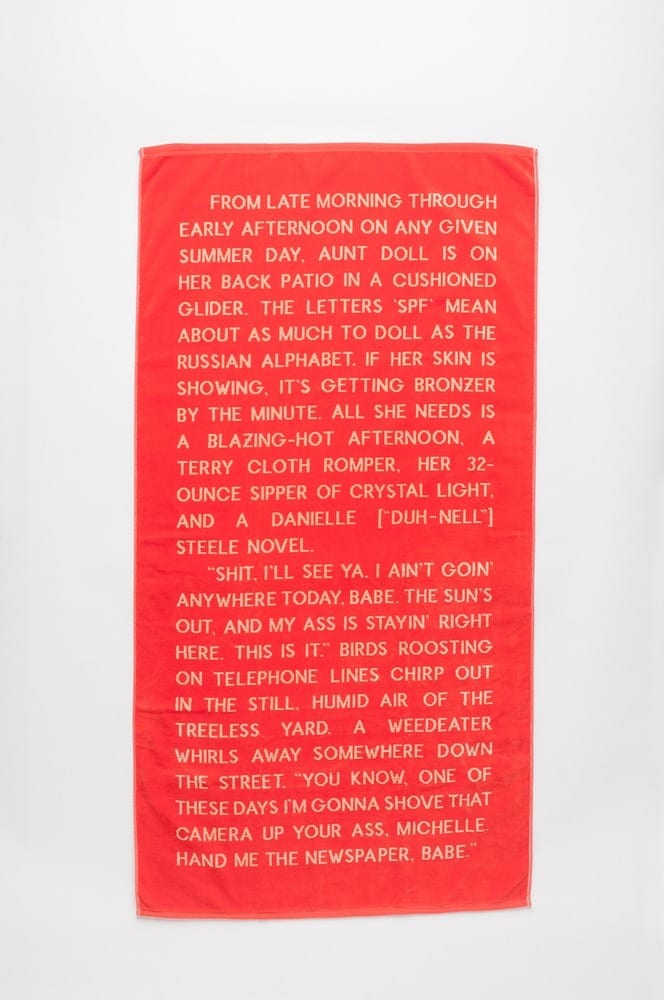
How do you stay focused when you’re working on a project?
I listen to music, I stay well-fed. I also step away pretty often – to eat and run around the block and re-group. Forcing an idea or a task leads to nothing, so I take frequent breaks and change up my environment, in hopes of inviting other inspiration or a new strategy to seep in.
If you could invite three people to a dinner party, living or dead, who would they be?
Errol Morris
Mike Judge
Sade
